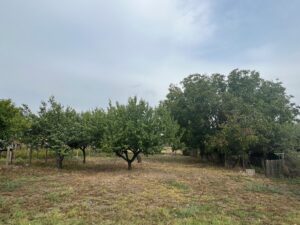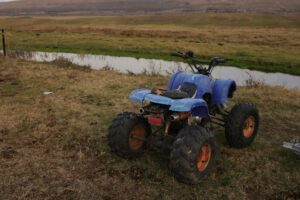Essential Farming Equipment & Tools for Self-Sufficiency
A successful self-sufficient farm relies on the right tools and equipment to ensure efficiency, sustainability, and productivity. Whether you’re managing livestock, growing crops, or maintaining infrastructure, having the correct farming tools makes daily tasks easier and more effective. From fencing to irrigation, each piece of equipment plays a crucial role in creating a resilient and self-sustaining operation.
Farming in Australia comes with unique challenges, from unpredictable weather to varying soil conditions. Investing in high-quality, durable tools can mean the difference between a thriving farm and unnecessary setbacks. Whether you are a beginner or an experienced farmer, understanding which equipment is essential will help you build a more efficient and productive system.
Below, we explore the essential categories of farming equipment and tools that support self-sufficiency in Australia. Click through to each category to learn more about specific tools, their uses, and how they can help you build a more productive and self-reliant farm.
Fencing & Enclosures
Fencing and enclosures are critical for protecting crops, securing livestock, and defining property boundaries. Choosing the right materials and designs can prevent predator attacks, reduce livestock escapes, and improve pasture management.
There are several types of fencing used in self-sufficient farming, including:
- Electric fencing: Effective for deterring predators and keeping animals contained.
- Wire mesh fencing: Ideal for poultry, small livestock, and garden enclosures.
- Post and rail fencing: Common for horses and larger livestock.
- Portable fencing: Useful for rotational grazing and flexible enclosures.
Proper fencing ensures animal safety while minimizing damage to crops and pastures.
Shelters
Providing adequate shelter for animals, equipment, and harvested crops is essential for long-term farm sustainability. Well-designed shelters protect livestock from harsh weather conditions, ensure feed and supplies remain dry, and increase operational efficiency.
Types of farm shelters include:
- Barns and sheds: Essential for storing equipment, feed, and livestock.
- Chicken coops: Providing warmth and protection for poultry.
- Greenhouses: Extending growing seasons and protecting plants from extreme conditions.
- Field shelters: Offering shade and wind protection for livestock.
Selecting the right materials and location for shelters helps ensure durability and function.
Tagging
Tagging livestock helps with identification, record-keeping, and breeding management. Ear tags, microchips, and branding are common methods used to track animals and ensure compliance with livestock regulations. Proper tagging enhances traceability and prevents loss, particularly in free-range systems.
Some tagging options include:
- Ear tags: The most common method for identifying individual animals.
- Microchipping: Provides electronic tracking for high-value livestock.
- Branding: Used for permanent identification, especially in cattle farming.
- Leg bands: Common for poultry and smaller livestock.
Effective tagging helps farmers track animal health, breeding cycles, and ownership records.
Feeders
Efficient feeding systems help maintain animal health while minimising waste. The right feeder setup ensures proper portion control, reduces contamination, and makes feeding livestock more convenient.
Types of feeders include:
- Automatic feeders: Reduce manual labor and ensure consistent feeding schedules.
- Hay racks and grain troughs: Prevent food contamination and waste.
- Poultry feeders: Designed to minimise spillage and discourage pests.
- Mineral dispensers: Ensure livestock receive essential nutrients.
Investing in high-quality feeding systems improves efficiency and ensures animals receive balanced nutrition.
Digging
Digging tools are fundamental for soil preparation, planting, and infrastructure development. Whether using hand tools like shovels and post-hole diggers or mechanized options such as augers and tractors, having the right digging equipment can save time and effort.
Essential digging tools include:
- Shovels and spades: Used for planting, soil aeration, and composting.
- Post-hole diggers: Crucial for installing fencing and structures.
- Garden forks: Ideal for turning soil and composting.
- Powered augers: Speed up digging for fence posts and tree planting.
Selecting durable, well-suited tools ensures better results with less physical strain. While these digging utilities are geared more to a manual, small operation – if you’re looking to get a little bit more serious, you will want to check out our comparison of small tractors available in Australia!
Irrigation
Water management is crucial for growing crops and maintaining pastures. Efficient irrigation systems help conserve water while ensuring plants receive the right amount of moisture. From drip irrigation to sprinkler systems, selecting the appropriate irrigation method depends on factors like land size, soil type, and climate conditions.
Common irrigation methods include:
- Drip irrigation: Delivers water directly to plant roots, reducing waste.
- Sprinkler systems: Suitable for larger fields and even water distribution.
- Soaker hoses: Ideal for small gardens and raised beds.
- Rainwater harvesting systems: Store and reuse natural rainfall for sustainable farming.
Proper irrigation planning improves crop yields and minimizes water waste.
Building a Self-Sufficient Farm
Investing in the right farming equipment and tools is key to building a successful, self-sufficient farm. Each tool plays a crucial role in streamlining workflows, increasing efficiency, and ensuring sustainability. By carefully selecting the appropriate tools for fencing, sheltering, tagging, feeding, digging, and irrigation, farmers can reduce manual labor while improving productivity.
Whether you’re just starting your self-sufficiency journey or looking to upgrade your existing setup, understanding the right tools for the job is essential. Explore each category further to make informed decisions about the best equipment for your needs.
The Latest on equipment from the grainshed blog
- Best Weed Mats and Ground Covers for Fruit Trees (2026 Guide)

- How to Use an Electric Fence Tester: Step-by-Step Guide

- Best Cow Drenchers Australia 2025: Compare by Price, Function & Purpose

- Quad Bike Rollover Protection Regulations in Australia: Understanding What You Need to Know

- Best Farm Gloves for Australian Farmers and Home Growers: Durability, Comfort & Grip

